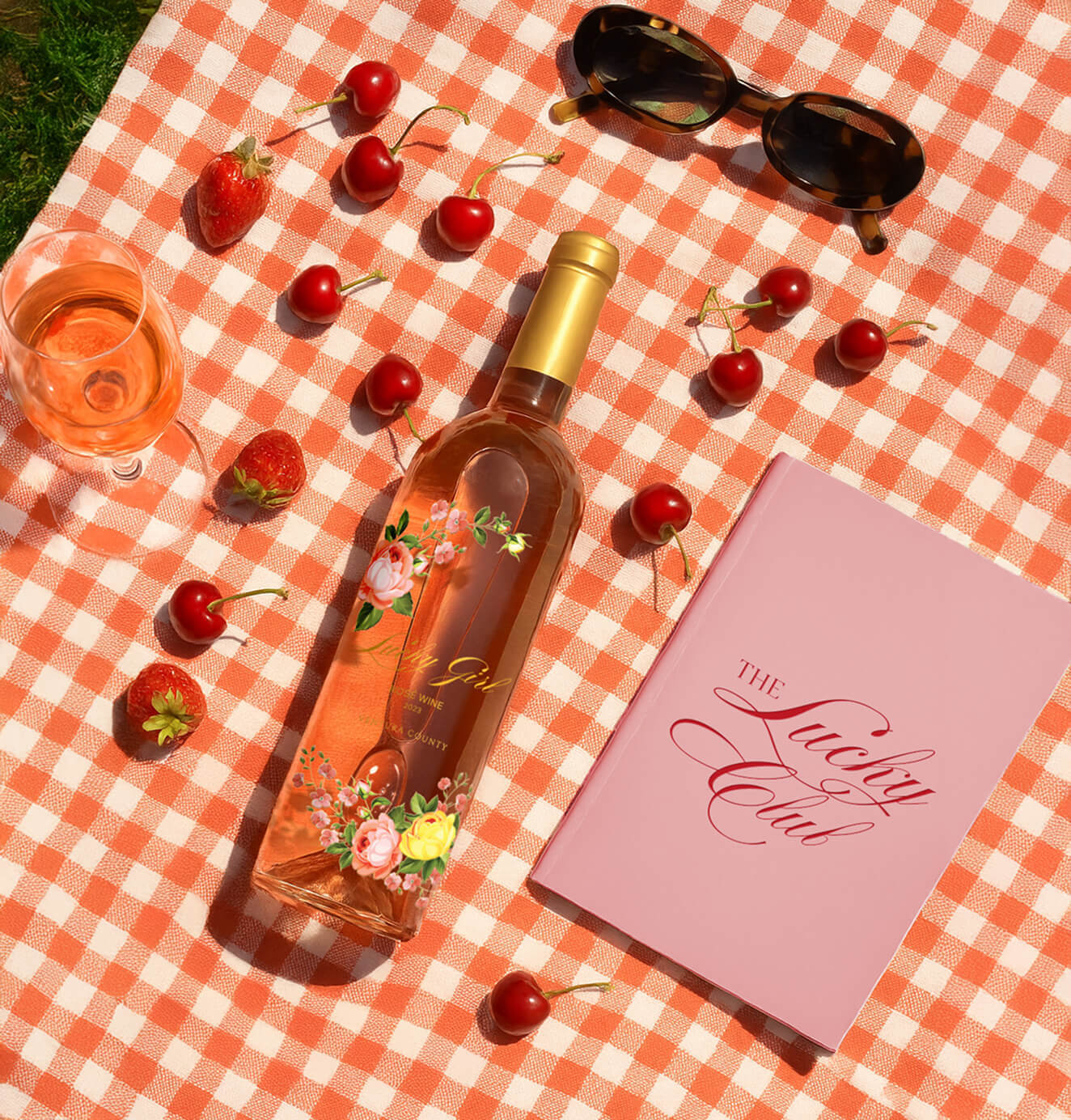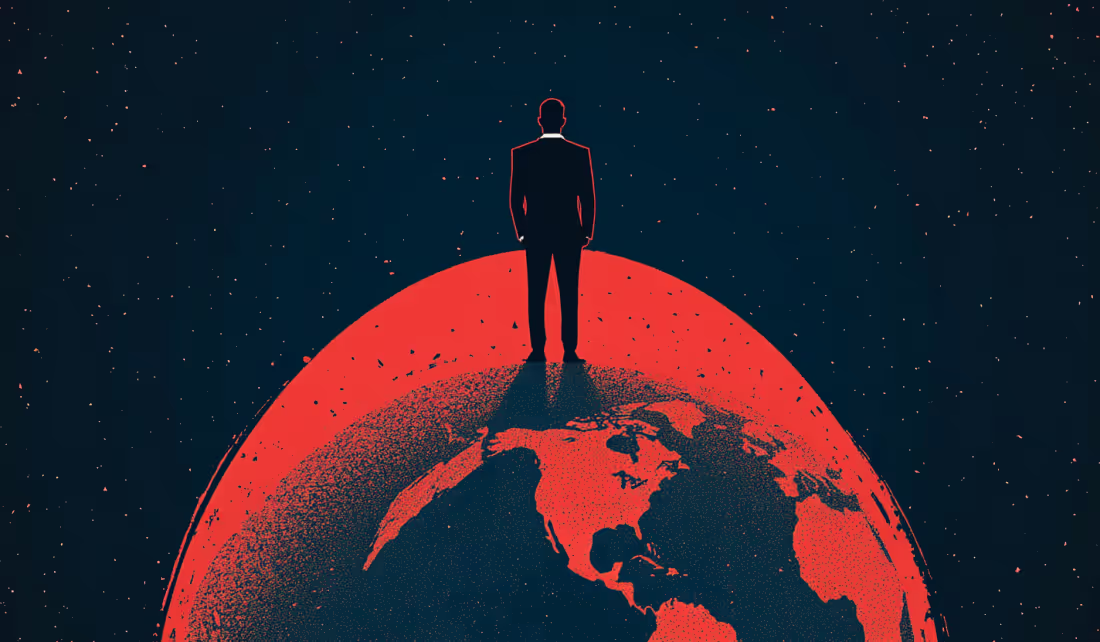Upgrade Your Creative Design Strategy with Our Innovative Blog: Unleash Your Imagination and Elevate Your Work to New Heights
01/14/2025
Brand Strategy
Unlock fresh insights and practical tips to elevate your creative design strategy and take your work to new heights.

Are you tired of your products blending in with the competition? Do you want to make a splash with a unique and memorable product that stands out in today’s cutthroat market? Look no further! A creative design strategy is the secret ingredient that can take your product from mediocre to magnificent. An effective creative strategy is crucial for companies to achieve specific business objectives, including clear definitions of the target audience and desired actions, as well as innovative approaches that align the end products with the company's brand identity and long-term growth goals.
.png)


A Guide to Designing a Unique and Memorable Product



In this blog post, we’ll show you how to harness the power of creative design strategy to craft a product that not only meets your customers’ needs but also establishes a strong brand identity. Get ready to take your product design to the next level with our comprehensive guide to designing a unique and memorable product.
Developing Your Creative Design Strategy
Establishing design objectives - Defining design criteria - Selecting the right design tools - Setting project timelines and milestones - Assigning roles to team members. A design strategist plays a crucial role in aligning the design process with business objectives, ensuring that design efforts are integrated into the broader operational strategy. - Creating visual prototypes to test ideas.
Executing Your Design Strategy
Incorporating user feedback into designs, Using data-driven insights to inform decisions, Utilizing the latest technologies for product development, and Adopting agile methods for more efficient workflow are all key elements of a creative director's role. The creative director plays a crucial role in overseeing the team and ensuring that design initiatives align with business objectives.
Evaluating the Effectiveness of Your Creative Design Strategy
Measuring user engagement metrics such as time on site and click-through rates - Testing usability through surveys or focus groups with users - Gathering customer feedback on product features. Utilizing project management software is crucial for monitoring KPIs and enhancing organizational efficiency.
Creative design strategy is essential for creating a unique, memorable product that stands out in the market. It involves understanding user needs, developing objectives, selecting tools, executing designs efficiently using data-driven insights, and evaluating effectiveness via metrics and user feedback. Diving into creative design strategy involves understanding the purpose and user’s needs for a particular product. By utilizing research and user experience testing, companies are able to gain an insight into their audience’s wishes and expectations of their product that can be used to create a tailored approach to development. This understanding means developing desirable and relevant features, layouts, processes and designs that meet not only customer demands but also keep in careful consideration any business goals in mind. Developing a creative design strategy ultimately results into a positive user experience – one that is engaging, interactive and useful – so it is essential to properly assess customer wants before starting on your project. When it comes to creative design strategy, it is key to identify the key features and benefits of the project in order to make sure design elements are properly prioritized. This process helps eliminate any distractions that can divert focus from the primary elements needed for creativity. Understanding the features and benefits unlocks a whole new realm of possibilities when looking at ideas, allowing creatives to begin visualizing how their solution could manifest itself. It also provides limits and parameters to work within, allowing adequate flexibility while still providing boundaries necessary for success.
When creating a product, it is essential to consider the look and feel of the material.
The colors, font styles, and design elements used in a product should be carefully considered from both an aesthetic perspective as well as a practical one: if the style contrasts too much with its content or environment, it can have a negative effect.
A creative design strategy also takes into account user experience and interaction — without these elements being taken into account alongside aesthetics and functionality, the entire product could be negatively impacted.
Creative design strategy is essential to creating an attractive, one-of-a-kind product.
By leveraging aesthetic appeal, sleek Product Photography and cutting-edge functionality, you can create something truly special and allow your customers to develop a deeper attachment to your product.
It’s important that innovative design and creativity takes center-stage when adhering to this strategy.
Not only will this bring out the best in your product, but it’s sure to build loyalty among customers and allow you to stand out from the competition.
By following these best practices and strategies outlined in this post, you can ensure that your product meets its goals while creating strong brand recognition among customers.
In addition to creative design elements, user experience should also be considered.
User experience includes how easy or difficult it is for customers to use or interact with your product.
This can include simple navigation features and intuitive design elements that make using the product a breeze.
Finally, consider the marketing aspects of your creative design strategy.
What are you doing to promote your product?
Are you using traditional marketing methods or are you taking advantage of digital channels such as social media and search engine optimization?
Knowing the tactics you’ll use to get your product in front of potential customers is an important part of creative design strategy.
By understanding your target audience, having a clear purpose for your product, and utilizing both creative design elements and marketing tactics, you can create a successful creative design strategy that helps your product stand out from the competition.
Do you need help with your creative design strategy?
If you’re to just take the words for face value, then the creative design is simply just that – a design that is creative.
But what counts as creative?
A new feature or interface?
Colorful designs?
There is really no fixed definition of what counts as ‘creative’ in the design process.
And that is what makes this concept a bit vague.
However, if we are to get a clearer understanding of creative design strategy, we can define it through the following points:
- Creative design usually involves the visual representation of certain elements. For example, in graphic design or logo design, it can be the use of bright, bold, and unique color combinations that really capture the audience’s attention. In software and applications, it can be a visually appealing, smooth, and user-friendly interface.
- Sometimes, it can be more than just visual elements. For example, a feature that offers simple, even obvious solutions to common problems faced by users.
So, at its core, creative design is the process of visually, functionally, or even emotionally bringing out a solid strategy that:
- Makes your product stand out from the crowd.
- Strikes a connection with your users, allowing them to be seamlessly adapt to your product.
- Helps you develop simple, grounded solutions to common problems.

Creative Design Strategies
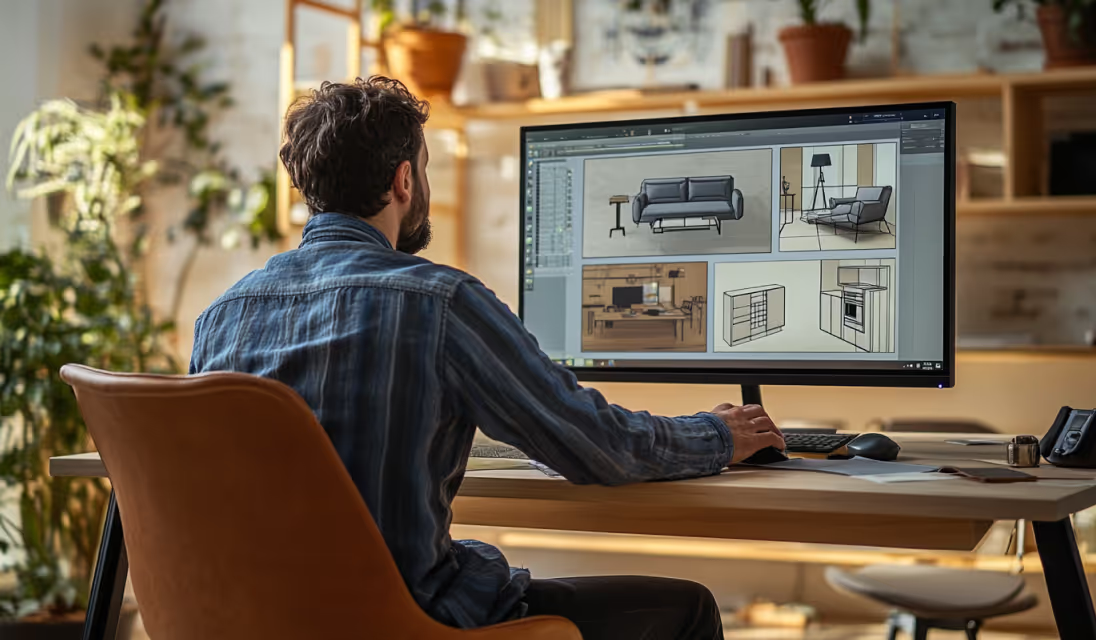

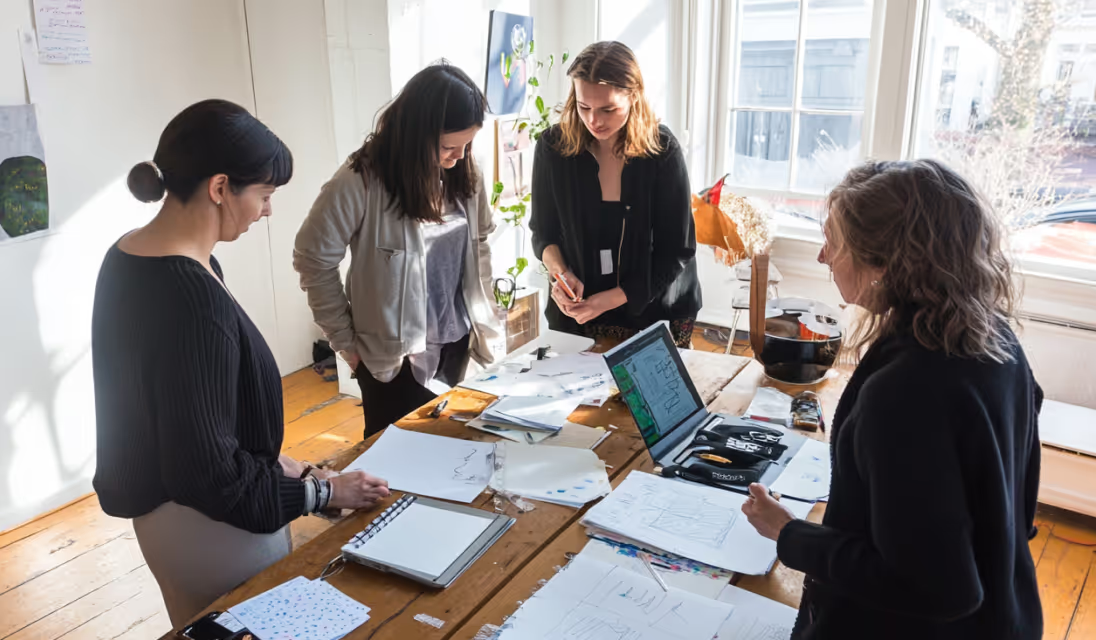
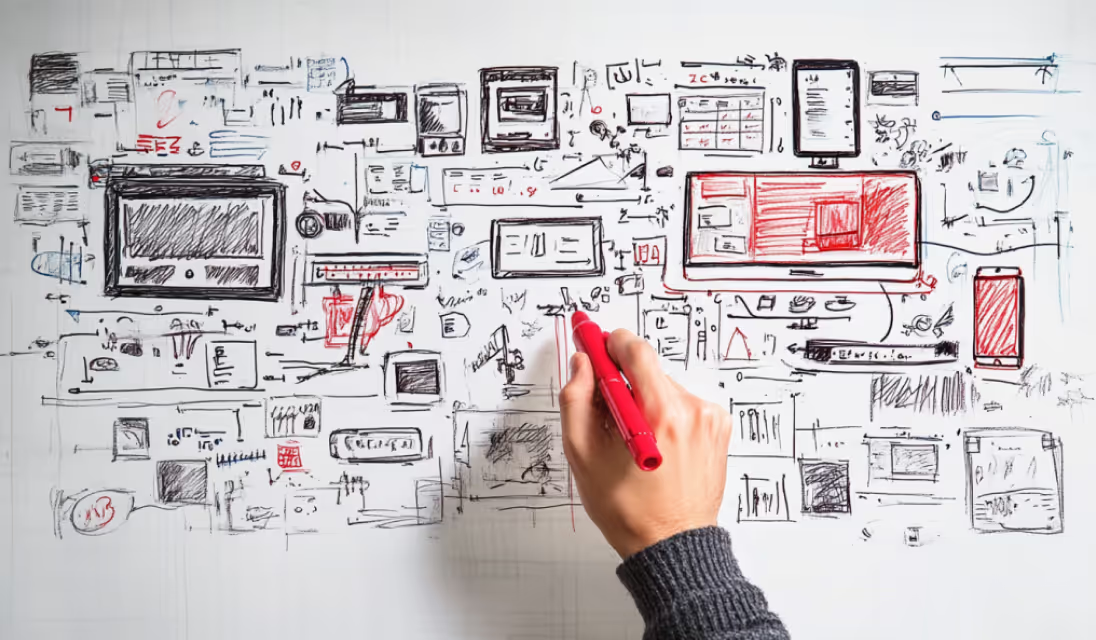








Here is a list of strategies and steps involved in the creative design process:
- Brainstorming sessions to generate ideas.
- Sketching initial concepts.
- Developing design concepts to guide the creation of initial prototypes.
- Creating digital mockups.
- Gathering feedback from stakeholders.
- Refining the designs based on feedback.
- Finalizing the design for production.
Building a Cohesive Creative Design Strategy
In the competitive business landscape, developing a robust creative design strategy is pivotal for achieving business objectives and establishing a strong brand presence. This involves integrating various elements, from market research to visual design, ensuring that the entire team, including the marketing team and design team, is aligned and focused on the common goals. Establishing a brand voice as a foundational element is crucial, as it defines the personality of the company and shapes how the audience perceives the brand through all forms of communication.
Aligning Creative Design with Business Objectives
One of the first steps in creating a successful creative design strategy is aligning it with your business objectives. This ensures that every design decision contributes to the overall corporate strategy and business goals. A clear understanding of these objectives helps the design team create brand assets that not only resonate with the target audience but also reinforce the brand’s identity and values. The lead designer plays a crucial role in guiding the design strategy, leveraging their expertise to refine design concepts and ensure alignment with client objectives and market demands.
Initial Concept and Prototypes
An important aspect of creative design is coming up with the initial concept of a product.
What is the main use of the product?
What features can be added that cannot be found in similar products? How can you make the product visually attractive without compromising simplicity and user experience?
Visual assets play a crucial role in creating visually attractive prototypes, enhancing the overall design and user experience.
These important questions need to be brainstormed when developing initial concepts and prototypes with the help of creative design strategies.
Understanding the Needs of Your Users
Another essential element of the creative design process is determining what your target audience wants and then figuring out how you can deliver it in a simple yet effective manner.
User feedback is one of the best and most effective ways to understand the needs of your users.
That is why many products launch a beta version to limited users and then analyze their responses and reviews to see what people say.
Based on the user feedback, further changes can be made before launching the final product.
Focus On One Problem at a Time
Product design is a complicated process, and you will encounter multiple obstacles that will halt the progress.
As part of your creative design strategy, you must tackle one problem at a time.
Creativity requires clarity of mind, so you don't want your attention diverted to many things simultaneously.
Having said that, it's equally important to prioritize potential problems and their solutions.
Design issues that can have a bigger impact on your product's success need to be dealt with first, followed by lesser serious issues.
Start Simple, Focus on Details Later
When working on the creative design process, always start small and simple.
It's something graphic designers often follow – starting with simple sketches and outlines and then slowly adding layers and details.
The same concept can be applied to other products as well.
For example, when building an app, you can start by just listing some basic elements and functions for the interface.
Want to learn more about brand platforms, Brand Strategy and Brand Identity? Keep reading!
If you need help with your companies brand strategy and identity, contact us for a free custom quote.
Be Willing to Explore Uncharted Territories
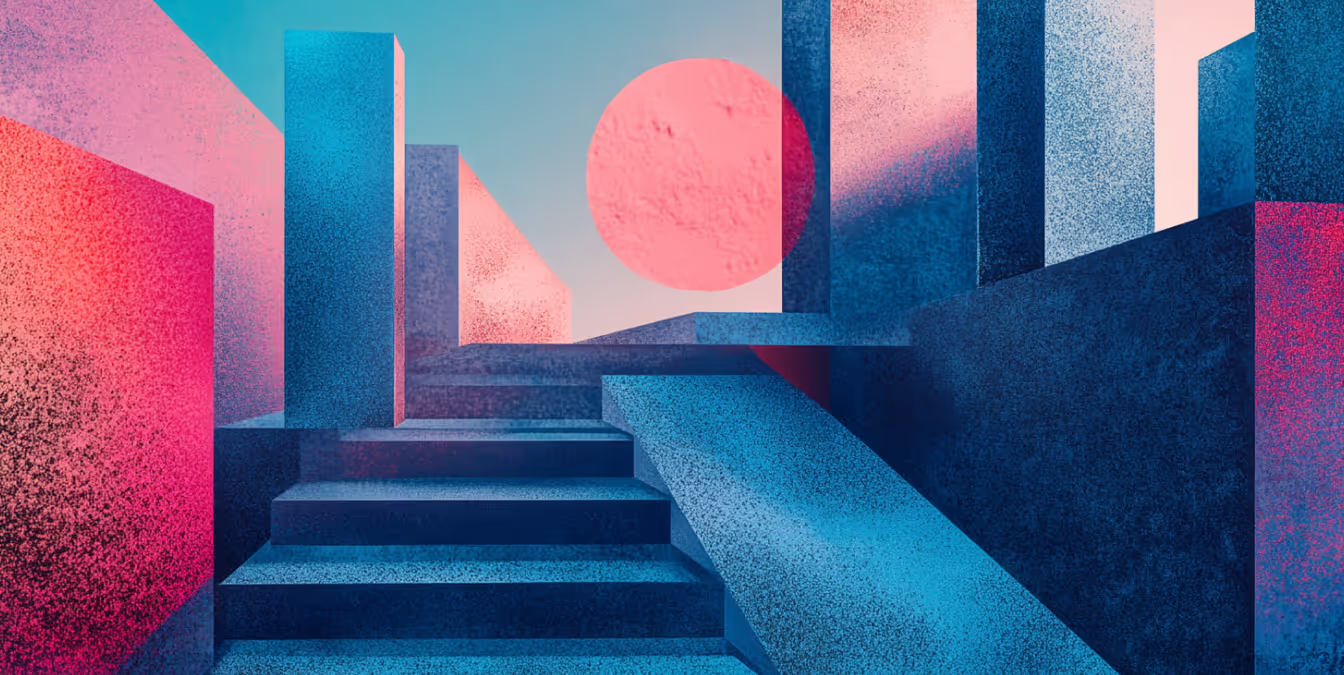
What this means is that as part of the creative process, you should be open to unconventional ideas that haven't been used much by others.
If you follow a fixed, one-track approach, it can lead to design fixation – a common problem that we'll discuss a bit later in detail.
Basically, you don't want to follow just one possible solution.
Be willing to explore new tools, ideas, and platforms as long as they can lead you to the desired feature or solution.
Implementing Iterative Design
Iterative design is a vast topic on which we could create an entire post.
However, we will briefly discuss it as part of the creative design process.
As the name suggests, iterative design is a process that runs in iterations or cycles.
You work on the initial stages of your product, run some tests and analyses, determine problems, find and implement solutions, and then repeat the process until you're certain about the final design.
With every iteration, you are essentially refining your product.
Benefits of Creative Design
While we could make a long list of the numerous benefits of creative design strategy, it can be generalized into the following points:
Creating a unique product that stands out in the market is crucial. Innovative gadgets and designs, such as the Nintendo Game & Watch Classic Console and the 3dRudder for PlayStation VR, exemplify how distinctive features and modern touches can make a product remarkable in the tech landscape.
One-of-a-Kind Product
Nowadays, users have many options to choose from.
Just making your product functional is no longer enough, as there can be hundreds of other products that may have the same functions and features.
Through creative design strategies, you can improve the overall look and visual elements, combined with functionality, making your product unique and one of a kind.
Creating Brand Image
A creative design strategy actually goes a long way toward developing a brand image for your product.
There are countless examples of popular brands that became iconic due to their eye-catching logos.
Think of Subway, and the colors yellow and green immediately come to mind.
That's just one example of how a creative design can turn your product and business into a brand.
Improving User Experience
The creative UX design focuses a lot on identifying problems and finding innovative solutions.
If done properly, it helps you build a product that addresses all users' concerns and offers them the best solution.
And that eventually leads to a solid user experience where users find the product useful, super easy to work with, and visually pleasant.
Send a Brand Message to Your Users
With a strong creative design strategy, you can also send a message to users explaining what your product is all about.
It is more common in advertising, where companies use slogans and creative ads to create a story or narrative around their product that also relates to users.
You don't need to look further.
Red Bull and its classic 'Red Bull gives you wings' slogan is a classic example of creative strategy in action.
Conclusion

Creative design strategy has become necessary for designers in today's market, where thousands, even millions, of products are in the same category.
It is the process of tweaking your product to break the conventional mold and bring something new and fresh to the table which sets you apart from your competitors.
And as we already explained, it also improves user experience and builds a brand image in the long term.
With this detailed guide to the basics of creative design strategy, we hope that you now have a clear understanding of it.
Of course, this is just the beginning – creativity is limitless and has no boundaries.
But, you should now be well-equipped with the necessary concepts to further learn and explore creative design strategies in detail.

Sloane Avery
As entrepreneurs, they’ve built and scaled their own ventures from zero to millions. They’ve been in the trenches, navigating the chaos of high-growth phases, making the hard calls, and learning firsthand what actually moves the needle. That’s what makes us different—we don’t just “consult,” we know what it takes because we’ve done it ourselves.
Want to learn more about brand platform?
If you need help with your companies brand strategy and identity, contact us for a free custom quote.
We do great work. And get great results.
+2.3xIncrease in revenue YoY
+126%Increase in repurchase rate YoY

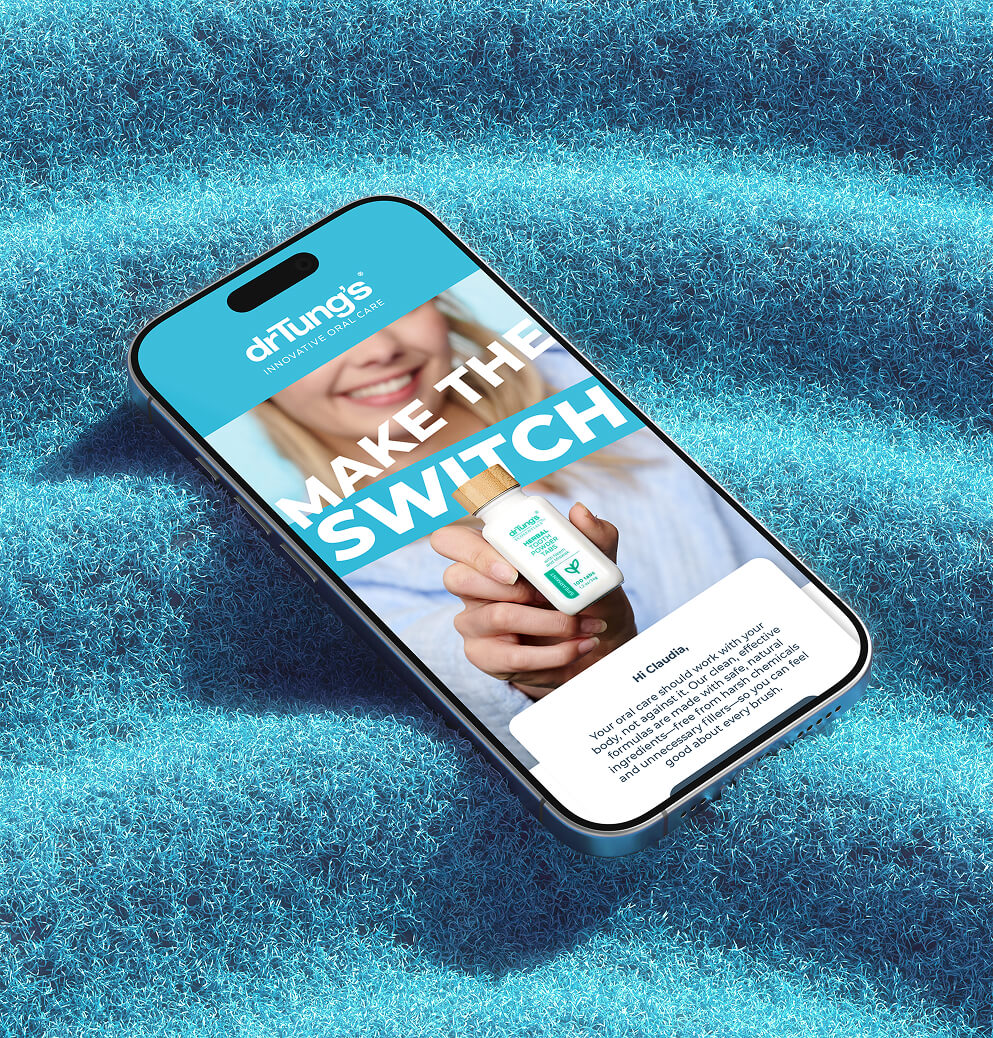

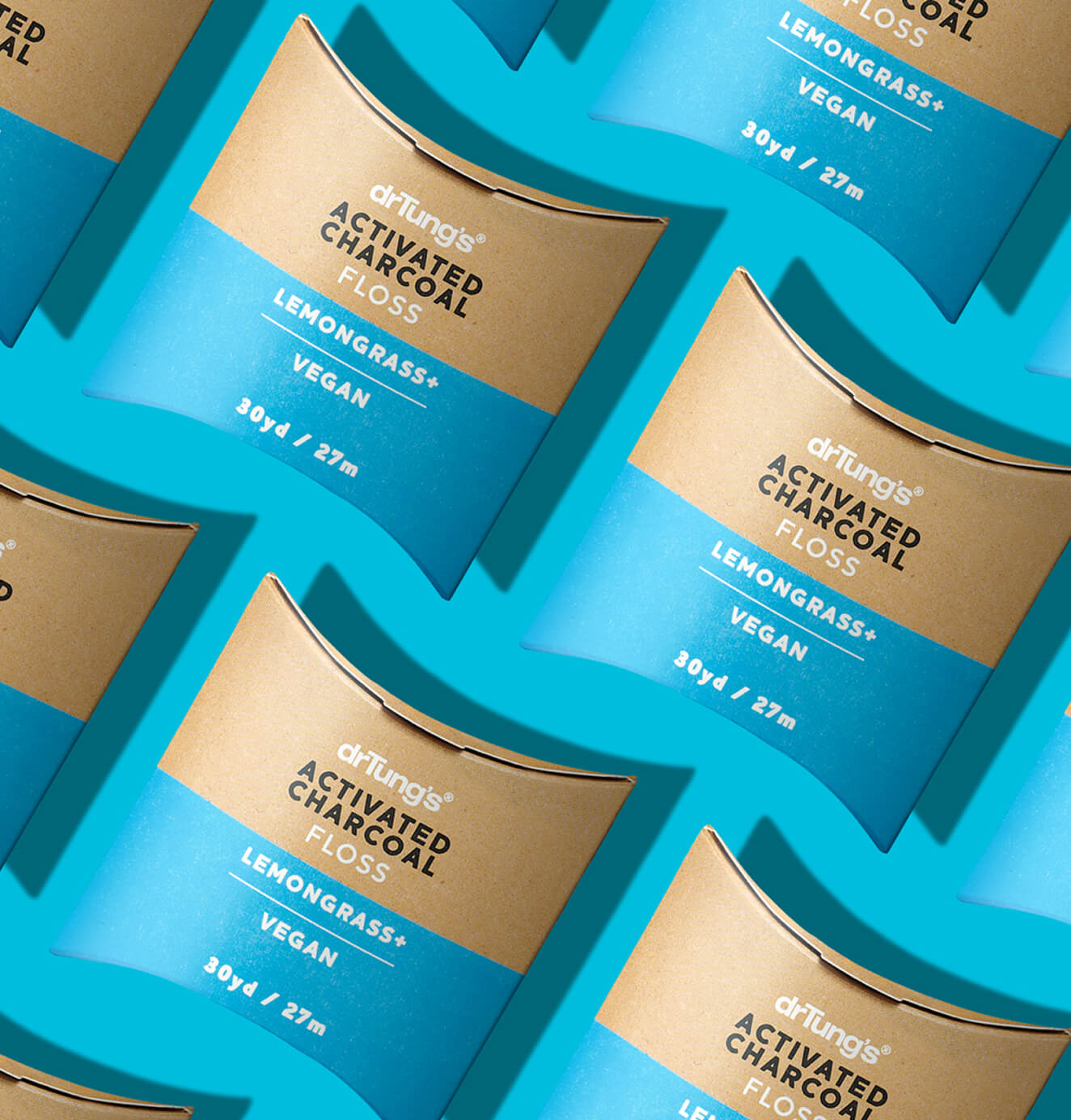




+93%Revenue growth in first 90 days
+144% Increase in attributed revenue


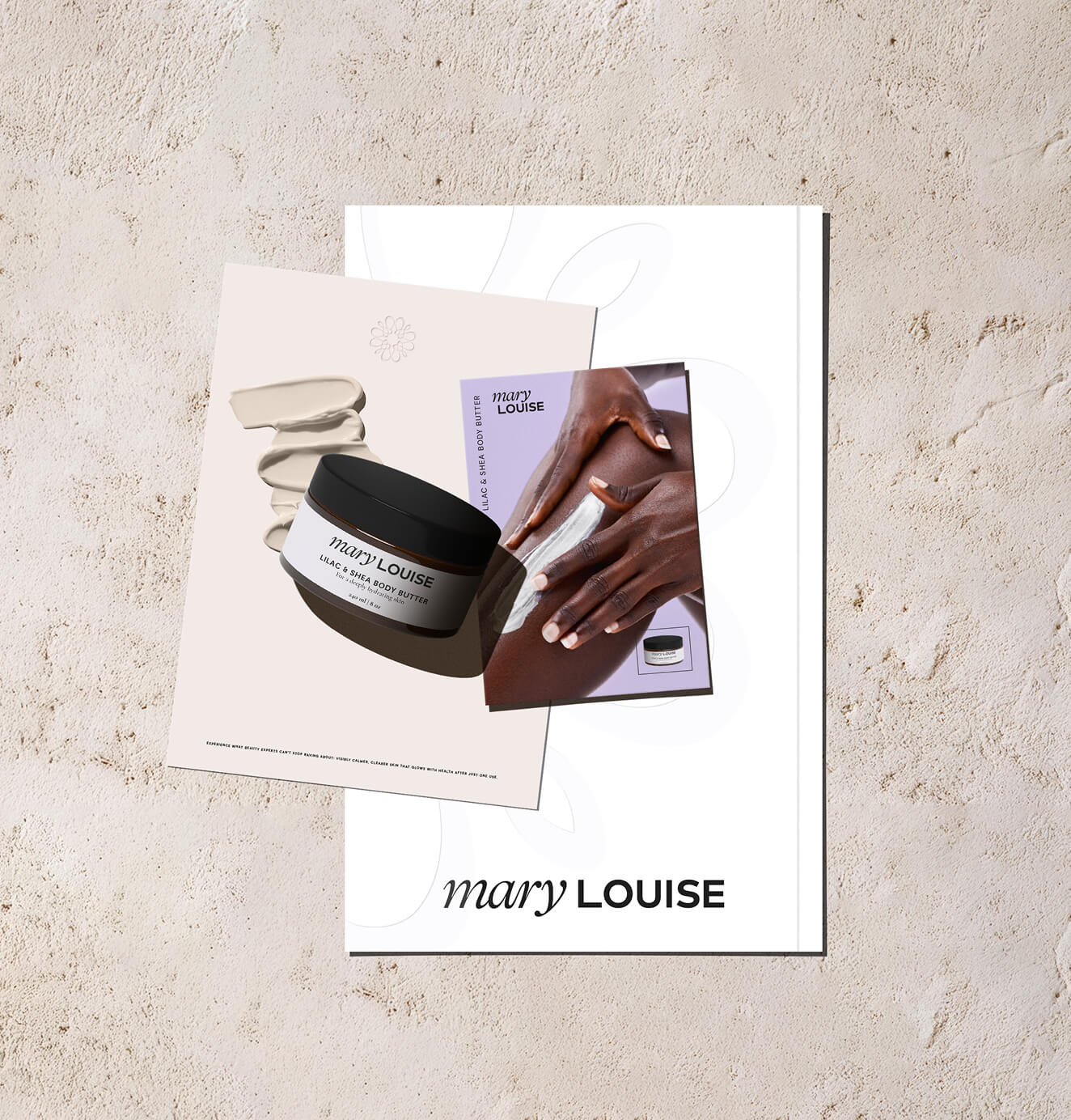





+91%Increase in conversion rate
+46%Increase in AOV


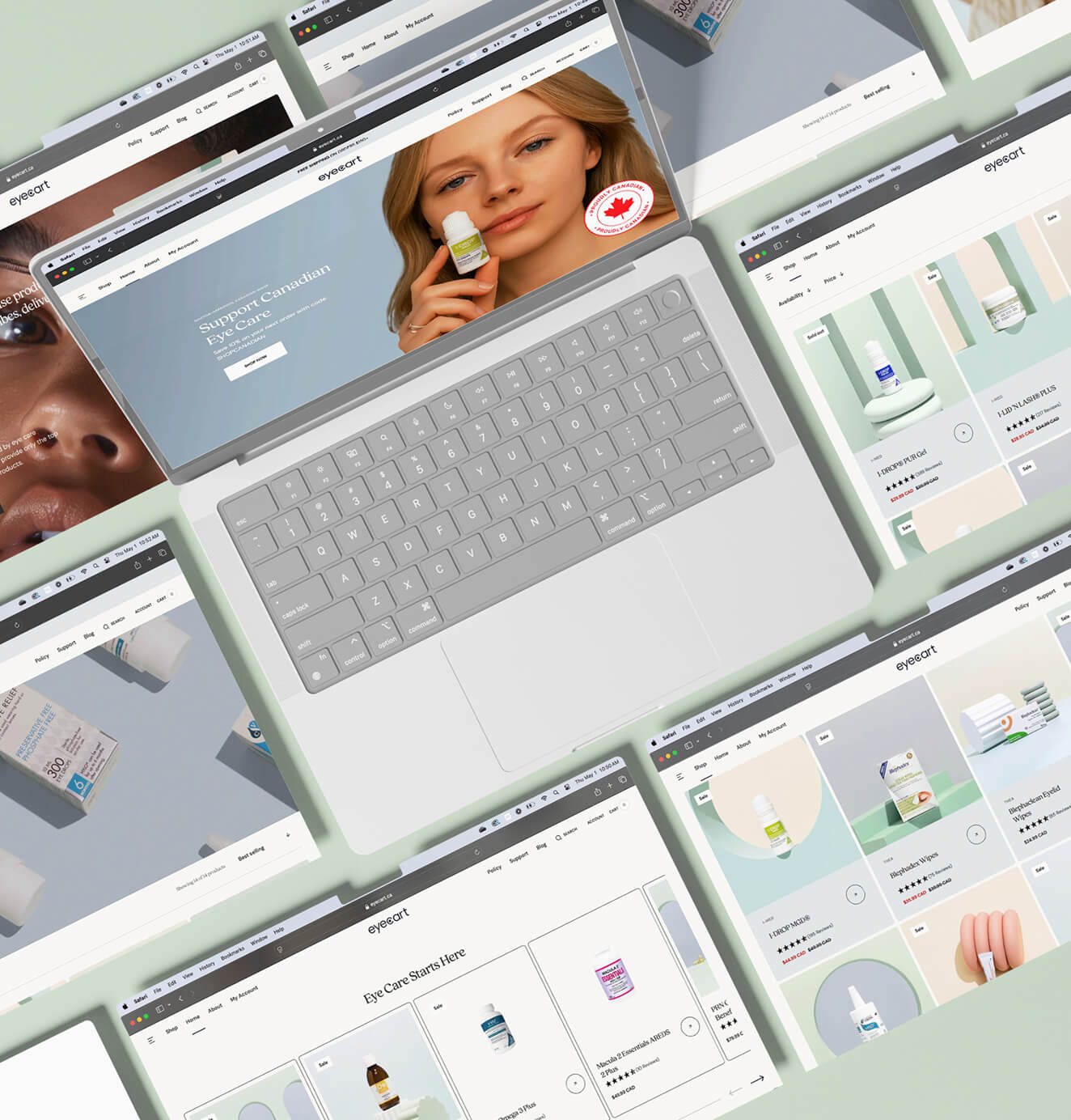





+200%Increase in conversion rate
+688%Increase in attributed revenue

